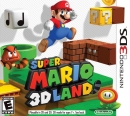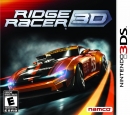curl-6 said:
fatslob-:O said:
curl-6 said:
I am aware it is a technique. One that makes it more efficient to do some things. It's not so much that it's a feat, more that it's something Wii U seems better equipped for than last gen consoles.
|
"Better equipped" is questionable since a G-buffer which consists of multiple render targets doesn't exactly have a very small footprint to be able to fit all of the render targets on the eDRAM and the WII U doesn't exactly have a very high memory bandwidth either to help the situation ...
|
Better than the situation on 360 where there was only 10MB of eDRAM.
Shin'en reckon the multiple render targets fit into 32MB just fine.
|
I was nagged at to see this thread via Steam.
Of course it would be.
You can do multiple render targets that fit just fine into 10Mb of eDRAM, you could also fit a 30Mb G-buffer into 10Mb of eDRAM.
Sounds impossible right?
Not exactly. - You can do multiple passes and you can do tiling.
After the first tile of the G-buffer is created, you can keep the Z in-place and then proceed to light it, then you can move onto the next tile, then the next and the next... This method allows you to minimse the overhead of reloads, provided if you aren't doing anything with neighbouring pixels.
From what I can recall, Xenos will have a bandwidth cap of roughly 16GB/s during this process, hence with a 30MB G-Buffer, that would take roughly 2 ms, which is more than do-able on the Xbox 360 and with just 10Mb of eDRAM.
The WiiU just requires far less trickery to achieve the same thing, but don't think that functionally it's superior, because it's not.
Also Megafenix, after all this time you really should stop posting information that you clearly have zero idea about, you LITERALLY have no idea if it's even correct or not or what half the stuff does.
Also, cats.

 @TheVoxelman on twitter
@TheVoxelman on twitter






























































